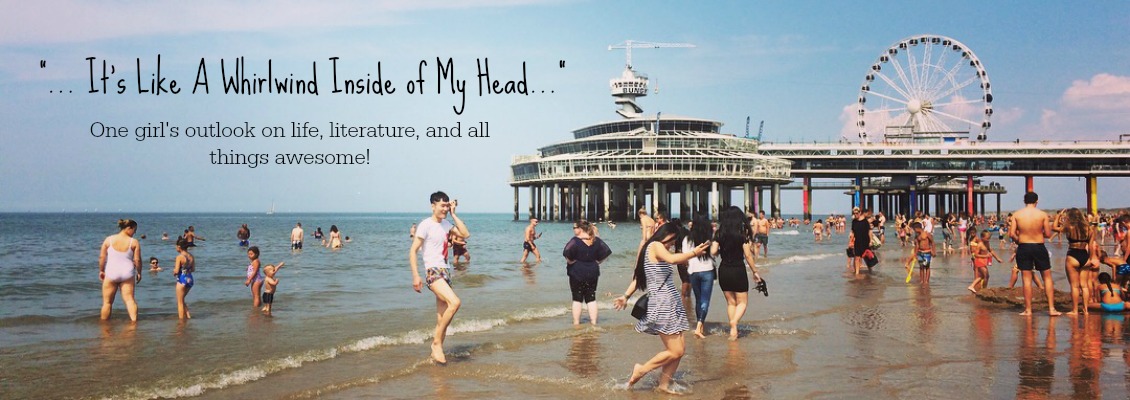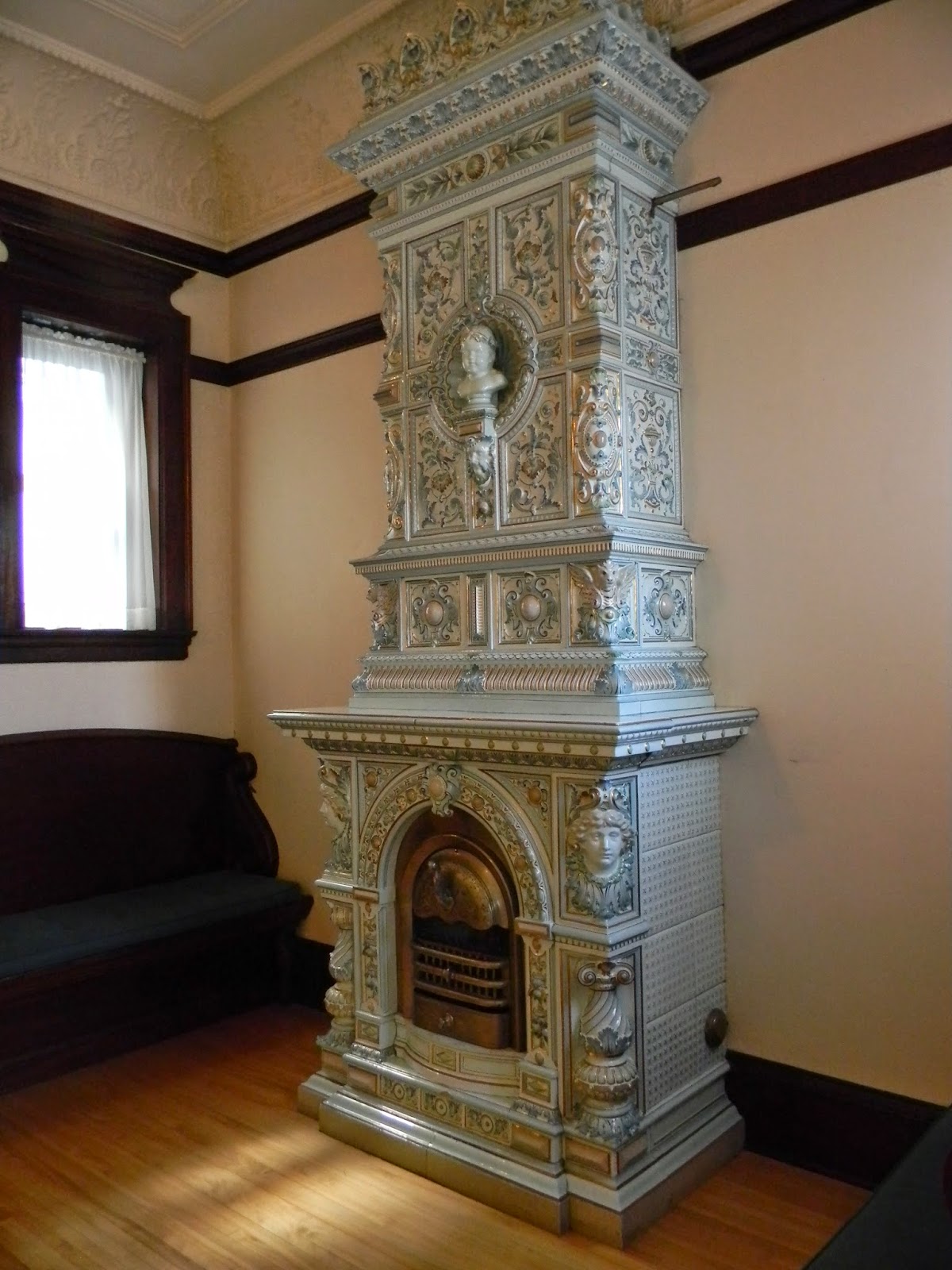Over my spring break, I spent my time visiting with some people I care about and also visiting some places around my city. One of those places was the American-Swedish Institute (ASI), located on the edge of downtown Minneapolis. I've passed by this castle in the middle of the city so many times, but I had never been in it until recently. Even my mom, who had been there previously, really enjoyed this visit!



When my mom and I walked into the museum, there was this room to the left of the ticket desk that we were (I think) supposed to go in first). We entered and we're surrounded by giant pieces of... ornately cut paper. Yes, paper! This work is called psaligraphy-- the featured artists were mostly Danish, but there was one or two Swedish artist featured around the museum. Some works were small, maybe the size of a good-sized plate, while others were bigger, making it necessary to cut two sheets of butcher paper and put the two together. Many of the pieces were created in separate parts.
But psaligraphy wasn't the only thing that ASI had to offer us. There was also Turnblad Mansion that we could walk through. A whole three floors and a basement with rooms filled with furniture from the family that lived there.
 I liked how this museum brought the old and the new together in this one enormous space. That was something I never thought that I would see at ASI. The use of local artists isn't the only way that this museum would combine the old and the new-- keep reading and you'll see a glimpse.
I liked how this museum brought the old and the new together in this one enormous space. That was something I never thought that I would see at ASI. The use of local artists isn't the only way that this museum would combine the old and the new-- keep reading and you'll see a glimpse.



Visitors can go everywhere from the kitchen to the grand staircase to the solarium (which was my absolute favorite. My future house will have circular alcoves (see picture with me in it, upper left of this section) and I will have a solarium. They're so warm and I love that it's a room filled with windows!).

Once my mom and I reached the upper floors, there was more gallery space. The historical aspect of the museum was "wrapping up" and guests could view more modern versions of the traditional psaligraphy we had seen in the newer part of the museum. Definitely click the pictures below to make them bigger: they're so detailed, you have no choice!
There was also a video that you could stand and watch that featured a woman working on a psaligraphy project. It's a very purposeful craft. The artists that were featured in this museum drew out what they were going to eventually cut out before they started cutting (this was good for me to learn-- I thought it was random cutting). Artists use a tiny scissors and can spend anywhere from the better part of a day to several days (if you added up every hour it was worked on) working on one piece.


 There were also these smaller pieces that were found only on the topmost floor of the mansion. I can't imagine that they were originally there-- there are modern pieces. Underneath each fairy was a quip-- a bit of common sense or a virtue that the artist thought was important to have. The fairy would visually represent the saying underneath. There were dozens of these fairies around the floor, but these four were some of my favorites. I just appreciate the amount of detail that is part of these pieces. They're tiny, but they're so intricate and delicate. Just look at the wings of the fairy in the upper right-- someone had to carve out each and every one of those tiny spaces. I realized this after the fact, but the artists who create psaligraphy must have to think the invert of what someone who draws or paints does. You have to remove the empty spaces in order to get the lines you want. Painters or those who draw create the lines they want instantly. This is just fascinating to me.
There were also these smaller pieces that were found only on the topmost floor of the mansion. I can't imagine that they were originally there-- there are modern pieces. Underneath each fairy was a quip-- a bit of common sense or a virtue that the artist thought was important to have. The fairy would visually represent the saying underneath. There were dozens of these fairies around the floor, but these four were some of my favorites. I just appreciate the amount of detail that is part of these pieces. They're tiny, but they're so intricate and delicate. Just look at the wings of the fairy in the upper right-- someone had to carve out each and every one of those tiny spaces. I realized this after the fact, but the artists who create psaligraphy must have to think the invert of what someone who draws or paints does. You have to remove the empty spaces in order to get the lines you want. Painters or those who draw create the lines they want instantly. This is just fascinating to me.

This is an incredibly long post as it is, so I'll leave you the way I left the museum-- by looking at the exterior of Turnblad Mansion.
This was an awesome experience for me and also for my mom, who just loves paper. Someday I'll have to go back when the mansion is all decorated for Christmas. But that won't be this year-- I'll have parts of Europe to share with you!
Thanks for Reading!
--Jude



When my mom and I walked into the museum, there was this room to the left of the ticket desk that we were (I think) supposed to go in first). We entered and we're surrounded by giant pieces of... ornately cut paper. Yes, paper! This work is called psaligraphy-- the featured artists were mostly Danish, but there was one or two Swedish artist featured around the museum. Some works were small, maybe the size of a good-sized plate, while others were bigger, making it necessary to cut two sheets of butcher paper and put the two together. Many of the pieces were created in separate parts.
But psaligraphy wasn't the only thing that ASI had to offer us. There was also Turnblad Mansion that we could walk through. A whole three floors and a basement with rooms filled with furniture from the family that lived there.
But not only are they showing off the mansion and featuring psaligraphy all over the house, they're also featuring some local artists (click pictures to look closer):
 I liked how this museum brought the old and the new together in this one enormous space. That was something I never thought that I would see at ASI. The use of local artists isn't the only way that this museum would combine the old and the new-- keep reading and you'll see a glimpse.
I liked how this museum brought the old and the new together in this one enormous space. That was something I never thought that I would see at ASI. The use of local artists isn't the only way that this museum would combine the old and the new-- keep reading and you'll see a glimpse.


Visitors can go everywhere from the kitchen to the grand staircase to the solarium (which was my absolute favorite. My future house will have circular alcoves (see picture with me in it, upper left of this section) and I will have a solarium. They're so warm and I love that it's a room filled with windows!).

 |
| This artist computer cut this version of psaligraphy and made it into a 3-D sculpture. |
 |
| Finished psaligraphy didn't need to look like it came from a rectangular piece of paper. |
 |
| Traditional psaligraphy is made out of cut paper, but this artist took the same idea but used metal (aluminum?) as a medium. |
 |
| This one is my absolute favorite! |


 There were also these smaller pieces that were found only on the topmost floor of the mansion. I can't imagine that they were originally there-- there are modern pieces. Underneath each fairy was a quip-- a bit of common sense or a virtue that the artist thought was important to have. The fairy would visually represent the saying underneath. There were dozens of these fairies around the floor, but these four were some of my favorites. I just appreciate the amount of detail that is part of these pieces. They're tiny, but they're so intricate and delicate. Just look at the wings of the fairy in the upper right-- someone had to carve out each and every one of those tiny spaces. I realized this after the fact, but the artists who create psaligraphy must have to think the invert of what someone who draws or paints does. You have to remove the empty spaces in order to get the lines you want. Painters or those who draw create the lines they want instantly. This is just fascinating to me.
There were also these smaller pieces that were found only on the topmost floor of the mansion. I can't imagine that they were originally there-- there are modern pieces. Underneath each fairy was a quip-- a bit of common sense or a virtue that the artist thought was important to have. The fairy would visually represent the saying underneath. There were dozens of these fairies around the floor, but these four were some of my favorites. I just appreciate the amount of detail that is part of these pieces. They're tiny, but they're so intricate and delicate. Just look at the wings of the fairy in the upper right-- someone had to carve out each and every one of those tiny spaces. I realized this after the fact, but the artists who create psaligraphy must have to think the invert of what someone who draws or paints does. You have to remove the empty spaces in order to get the lines you want. Painters or those who draw create the lines they want instantly. This is just fascinating to me.
This is an incredibly long post as it is, so I'll leave you the way I left the museum-- by looking at the exterior of Turnblad Mansion.
This was an awesome experience for me and also for my mom, who just loves paper. Someday I'll have to go back when the mansion is all decorated for Christmas. But that won't be this year-- I'll have parts of Europe to share with you!
Thanks for Reading!
--Jude











No comments:
Post a Comment
I love your comments! Comment away!